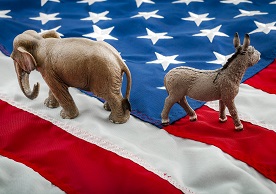
CSAP Director Gregory Huber and former Yale graduate student Lilla Orr have a new publication out, “Measuring Misperceptions: Limits of Party-Specific Sterotype Reports.” Read the full article in Public Opinion Quarterly (November 29, 2021).
Abstract: Prior research has reported that Americans hold biased perceptions about the composition of US parties. Survey respondents vastly overestimate the frequency with which partisans belong to other social groups stereotypically associated with their party. We argue that when perceptions of Democrats, Republicans, and members of the American public are directly compared, evidence of relative misperceptions is limited. Drawing on novel survey experimental measures, we find that respondents underestimate many differences in the demographic composition of the Democratic and Republican parties. A few stereotypes thought to be associated with one party or the other may apply to partisans in general. Similar trends appear across parties and among strong partisans. These findings suggest limits on the extent to which inaccurate estimates of who affiliates with each party can be interpreted as evidence of party-specific stereotypes.
Lilla Orr is now a postdoctoral fellow at the Immigration Policy Lab at Stanford University. In fall of 2022, she will be joining the University of Richmond Department of Mathematics and Computer Science as an Assistant Professor. Lilla was a graduate student affiliate of CSAP, and received her Ph.D. in Political Science from Yale in 2021.
